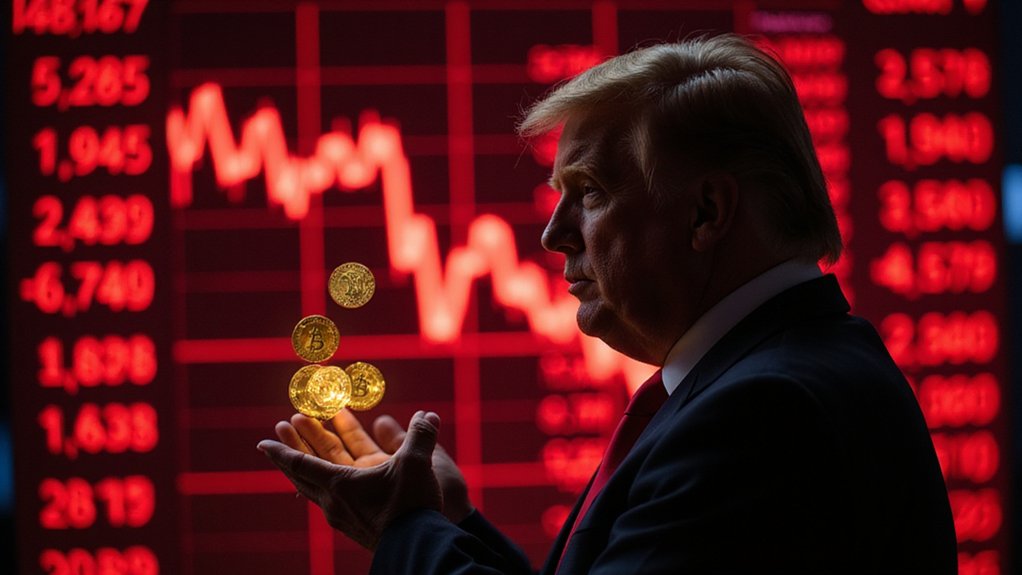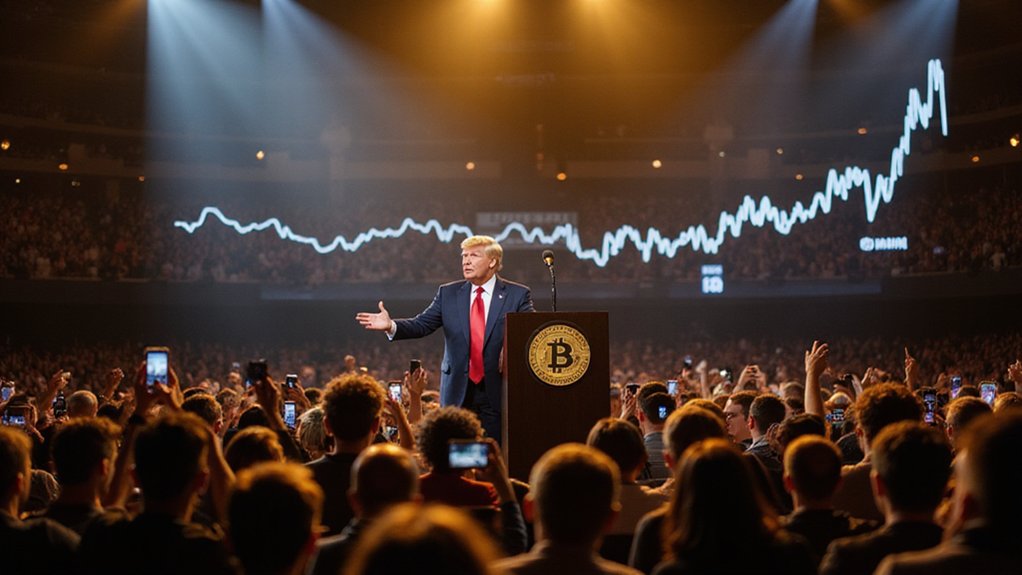While Federal Reserve Chair Jerome Powell‘s 2025 Jackson Hole address contained the usual measured central banker speak about “data dependency” and “appropriate policy adjustments,” markets demonstrated their characteristic ability to decode dovish undertones with the precision of cryptographers breaking wartime ciphers.
Powell’s acknowledgment of economic “cracks” and cooling inflation fundamentally telegraphed a monetary pivot after nearly two years of aggressive tightening—a shift that Bitcoin evangelists had been anticipating with the fervor of desert wanderers awaiting rain.
The Fed Chair’s carefully calibrated remarks about policy readiness sparked immediate algorithmic pandemonium, with Bitcoin surging approximately $5,000 to reach $117,000, a theatrical 5% leap that reminded observers why crypto remains the market’s most dramatic performer.
The liquidation carnage was swift and brutal: nearly $380 million in short positions evaporated faster than Powell’s hawkish credibility, while Ether managed an even more spectacular 11.5% rally to reclaim its 2021 peaks around $4,850.
This wasn’t merely price action—it represented the market’s instantaneous recalibration of risk appetite as rate cut probabilities soared to 73-87% for September.
The underlying mechanics prove instructive. Lower interest rates diminish the opportunity cost of holding non-yielding assets like Bitcoin while simultaneously weakening the dollar—a double tailwind that institutional investors (armed with freshly minted ETF vehicles since BlackRock’s 2023 application) find increasingly compelling.
The crypto Fear & Greed Index‘s rapid migration from “Neutral” to “Greed” captured this sentiment shift with algorithmic precision.
Ether’s outsized sensitivity reflects its unique positioning within decentralized finance ecosystems, where falling rates make DeFi yields increasingly attractive relative to traditional bank deposits.
This dynamic illustrates how monetary policy ripples through crypto’s interconnected layers with amplified effect.
Perhaps most remarkably, this monetary easing cycle arrives with institutional infrastructure already established—unlike previous Fed pivots when crypto remained largely retail-driven speculation.
The convergence of dovish policy signals with mature institutional adoption channels suggests Bitcoin’s current momentum operates on fundamentally different scaffolding than previous cycles, transforming Powell’s Jackson Hole musings into genuine catalysts rather than mere speculative fuel. Amid this volatility, many investors have turned to stablecoins for temporary safe harbor, providing the consistent value bridge between traditional finance and the rapidly evolving crypto landscape.








